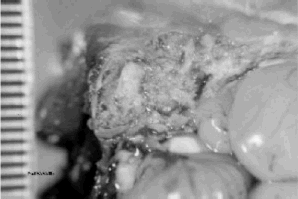



Avian Rhinotracheitis 'Swollen Head Syndrome'
Introduction
A viral disease of chickens, turkeys (see separate summary), guinea fowl and possibly pheasants seen in Europe, Africa, South America and North America. It is caused by a pneumovirus of the Paramyxoviridae family, first isolated from poults in South Africa in 1978. Two subgroups have been identified on the basis of the G-protein sequence: A (original UK isolates) and B (original southern Europe isolates). There is rapid lateral transmission with infection by aerosol through the respiratory route; vertical transmission is uncertain. As for many infections, fomites can be important in moving infection between farms. The incubation period is 5-7 days, morbidity is 10-100% and mortality can be 1-10%.
Signs
- Decreased appetite, weight gain and feed efficiency.
- Facial and head swelling (though this can occur in other conditions).
- Loss of voice.
- Ocular and nasal discharge.
- Conjunctivitis.
- Snick.
- Dyspnoea.
- Sinusitis.
Post-mortem lesions
- Serous rhinitis and tracheitis, sometimes pus in bronchi. If secondary invasion by E. coli then pneumonia, airsacculitis and perihepatitis.
- Congestion, oedema and pus in the air space of the skull occurs in a proportion of affected birds due to secondary bacterial infections.
Diagnosis
Clinical signs, serology, isolation of ciliostatic agent. Differentiate from Infectious Bronchitis, Lentogenic Newcastle disease, low virulence avian influenza, Ornithobacterium rhinotracheale. Serology - Elisa normally used, not all commercial kits are equally sensitive to response to both A and B challenge viruses.
Treatment
Antibiotic not very effective. Control respiratory stressors, chlorination of drinking water, multivitamins.
Prevention
All-in/all-out production, vaccination (degree of cross protection between A and B types remains to be established). Live vaccines can reduce clinical signs and adverse effects, inactivated vaccines may be used in breeders prior to lay.
 |
| Figure 10. Pus in skull bones. This is a common sequel to avian pneumovirus infection in both chickens and turkeys. |







